Back Car Door Window Replacement: A Detailed Guide
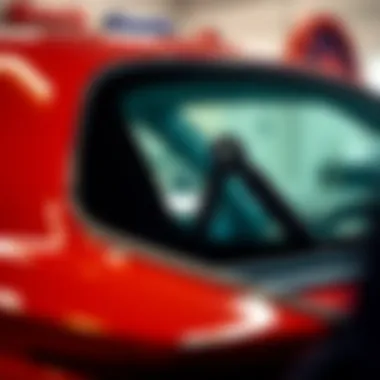
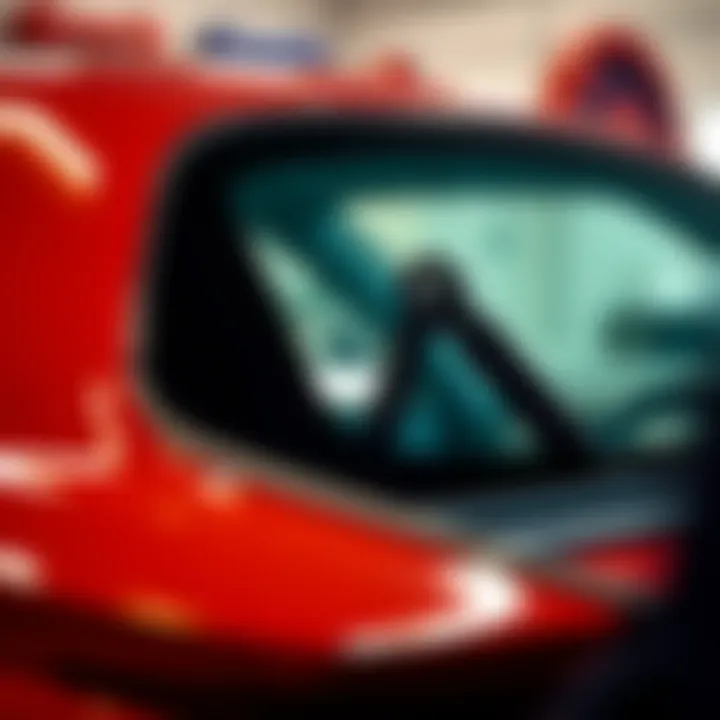
Intro
Replacing the back door window of a car might seem like a minor repair in the grand scheme of vehicle maintenance, yet it can transform how a vehicle functions and feels. A cracked or shattered window not only dilutes the aesthetic appeal of your ride but can also hinder visibility and compromise safety. Understanding the ins and outs of this process may save you time and money when the chips are down—literally.
In the chapters that follow, we shall delve into the various aspects of back car door window replacement, including reasons why one might need a replacement, the diverse types of windows available, and the essential tools that you’ll require for this task. We won’t stop there. This guide also offers a step-by-step approach to the replacement process, troubleshooting common issues that can crop up, and some handy maintenance tips for after you've completed the work. Whether you are a seasoned mechanic or a newcomer to car repairs, this guide aims at illuminating the pathway to effective back window replacement.
By incorporating uniquely detailed examples and user-centric insights, we will bring this subject to life, ensuring every reader walks away equipped with actionable knowledge. This is not merely a tutorial; it is a deep dive into the world of automotive care tailored for both enthusiasts and professionals.
The Necessity of Back Car Door Window Replacement
When it comes to the upkeep of your vehicle, one area that often gets overlooked is the back car door window. Contrary to popular belief, a functioning window is not just about appearance; it plays a crucial role in safety, insulation, and even fuel efficiency. A damaged window can lead to a host of issues, from potential theft to decreased comfort for passengers. This section sheds light on the pressing need for replacement and when it becomes imperative to take action.
Identifying Common Problems
Understanding the common issues that plague back car door windows is the first step in recognizing when replacement is necessary. This section breaks down three specific areas—cracks and chips, electrical malfunctions, and complete breakage—that pose the greatest concern.
Cracks and Chips
Cracks and chips are more than just unsightly blemishes. Such damage can quickly spiral into more significant problems if left unattended. Not only do they obstruct visibility, but they also compromise the structural integrity of the glass. Additionally, moisture can seep into these tiny fissures, leading to mold buildup or further deterioration. In the long run, addressing these issues promptly is a much more cost-effective approach.
Key characteristics: These flaws are typically caused by debris impact or sudden temperature changes, making them a common plight for many drivers.
Benefits of addressing cracks and chips: When dealt with early on, the repair or replacement process becomes simpler and less costly compared to waiting for complete breakage.
Electrical Malfunctions
For vehicles equipped with automatic windows, electrical malfunctions pose a different kind of headache. Windows that fail to operate can be a result of issues in the motor, wiring, or control switches. Ignoring these problems can prevent a window from closing completely, posing safety hazards not only to passengers but also leaving the vehicle vulnerable to theft.
Key characteristics: Electrical problems are often silent until they present themselves, making it crucial for drivers to stay vigilant and pay attention to any abnormal sounds or behaviors.
Advantages of early detection: Fixing electrical malfunctions promptly can often save money in the long run, avoiding the need for more extensive repairs.
Complete Breakage
When a back car door window sustains complete breakage, swift action is essential. A shattered window leaves your vehicle exposed to the elements and potential theft, creating an uncomfortable environment for passengers. It generally demands immediate replacement.
Key characteristics: Complete breakage can result from vandalism or severe impact, leading to glass shards and potential hazards.
Importance of replacement: Addressing complete breakage as soon as possible restores safety and security to the vehicle, which cannot be overlooked.
When to Consider Replacement
Deciding when to replace a window involves a careful examination of multiple factors. From the economic implications to aesthetic considerations and safety concerns, each aspect requires attention.
Cost Effectiveness
Cost is often the most decisive factor. If repair costs exceed a certain percentage of the replacement cost, opting for a new window makes more sense. Additionally, a replacement can enhance energy efficiency, contributing to savings in fuel costs as well.
Key characteristics: Repairing a window may seem cheaper initially, but can lead to higher expenses if recurring issues arise.
Advantages of taking the plunge: Many modern windows are designed to fit seamlessly and efficiently, providing long-term value to the vehicle owner.
Aesthetic Reasons
Aesthetically speaking, having a faulty back window can diminish the overall appeal of a vehicle. For car enthusiasts, or even just everyday drivers who take pride in keeping their cars looking pristine, this aspect is not to be ignored.
Key characteristics: A new window can help maintain the sleek look of your vehicle, yielding a more polished appearance.
Benefits of new glass: Enhanced clarity and tinting options can improve both the look and functionality, offering UV protection as well as reducing glare.
Safety Concerns
Last but certainly not least, safety cannot be overstated. A compromised window can lead to accidents due to impaired visibility or introduce hazards caused by broken glass. Addressing safety concerns should always be a top priority among car owners.
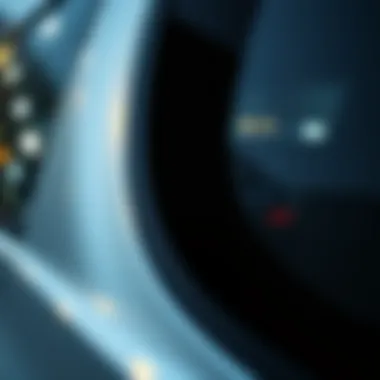

Key characteristics: Faulty windows can lead to distractions while driving, while shattered glass presents a risk for injury.
Advantages of prioritizing safety: Investing in a new window ensures protection not just for the driver but also for passengers and other road users.
Understanding Different Types of Back Car Door Windows
When it comes to back car door windows, the choices you have are like a mixed bag of nuts – all have their unique qualities that can fit various needs and preferences. This section takes a closer look at different types of back car door windows, exploring aspects like functionality, aesthetics, and safety, all of which contribute to informed decision-making for replacement or repair.
Manual vs. Automatic Windows
Manual windows require a little elbow grease. It's a straightforward crank or lift mechanism, allowing operation with minimal complexity. On the flip side, automatic windows offer the ease of a button push. This adds a touch of modernity to your vehicle, but technology can sometimes be unpredictable. For instance, if an electrical problem sneaks up on you, it can render the automatic system inoperable.
"Choosing between manual and automatic windows often boils down to personal preference and the age of the car. Older models may come standard with manual options, while newer vehicles frequently have the automatic kind."
While manual windows can be more reliable in their simplicity, the automatic counterparts bring convenience to the table, making it clear that there's no one-size-fits-all option. Clarity on which type you have helps in selecting proper replacement parts, too.
Tinted vs. Clear Glass
This is another area where aesthetics and practicality collide. Tinted windows provide a layer of privacy and sun protection, which is great if you're driving in bright sunlight or want to keep prying eyes at bay. On the other hand, clear windows ensure maximum visibility, which is crucial for safe driving.
Things to think about:
- Privacy: Tinted glass shields the interior from curious onlookers.
- UV Protection: Tinted windows can block harmful UV rays, thus protecting your skin and your car's interior.
- State Regulations: There are laws in many areas regarding the darkness of tinted windows, making it necessary to understand local regulations.
Whether you choose tinted or clear glass will depend on your priorities, such as how you use your car, your style preferences, and compliance with legal stipulations.
Tempered and Laminated Glass
Both tempered and laminated glass have their distinct properties that can make or break a window replacement decision. Tempered glass is produced through a process of extreme heating and cooling, making it much stronger than regular glass. This kind of glass will shatter into small, less harmful pieces if broken, which can be safer in certain situations.
Laminated glass, by contrast, consists of two pieces of glass with a plastic interlayer. This feature provides added protection against breakage and external elements. If struck, laminated glass tends to crack but remain intact, which can be advantageous for keeping your vehicle secure.
In summary, understanding the distinctions between these glass types not only helps in making an informed choice regarding aesthetics and safety but can also have a significant impact on the overall durability and longevity of your replacement window.
Ultimately, the choice between these glass types should hinge upon your driving habits, safety preferences, and aesthetic tastes.
Essential Tools and Materials for Replacement
When it comes to replacing a back car door window, having the right tools and materials can mean the difference between a smooth operation and a headache. It’s essential not only to ensure you have what you need at hand, but also to understand how each item contributes to the task at hand. This section will delve into the various tools and materials that are crucial for this process, clarifying their roles and benefits, thereby equipping you to tackle the job confidently.
Basic Tools Required
Screwdrivers
Screwdrivers are fundamental in any DIY toolkit, notably for tasks that involve car windows. The versatility of screwdrivers is pivotal because they allow access to various screws that hold the door panel together. A Phillips head screwdriver is often a solid choice. It fits snugly in many screws found in vehicles, especially those that often require adjusting or removing. The advantage of choosing a screwdriver with a magnetic tip cannot be overstated; it prevents dropped screws that can be a real nuisance to locate later.
Another aspect to keep in mind is the size of the screwdriver. Having a set that includes various sizes can be beneficial, as certain applications might require larger or smaller heads. Using the correct size helps avoid stripping the screw heads, which is a hassle often faced by DIY enthusiasts.
Glass Suction Cups
Installing a new window can be daunting, and this is where glass suction cups come into play. Their main function is to handle glass safely and securely. With a good grip, you can position the new window gently without the risk of dropping it or injuring yourself. The key characteristic of glass suction cups is their ability to create a vacuum seal, which helps in lifting heavy glass pieces with relative ease.
One unique feature of these suction cups is their adjustable handles. This allows for a proper grip even at tricky angles. While they are beneficial during installation, it’s worth noting that they should be used on clean, smooth glass surfaces for maximum effectiveness.
Trim Removal Tools
Trim removal tools are often overlooked but are crucial for accessing the back door window without damaging the rest of the vehicle. These tools help in prying off the trim with minimal effort, thus preserving the integrity of both the trim and the door frame. The key characteristic of trim removal tools is their flat edge, allowing for precision when detaching trim clips or panels.
A notable benefit is that they are designed to be lightweight yet durable; this means they can withstand the pressure applied during removal. However, caution is advised—using too much force can lead to unintended damage.
Materials Needed
Replacement Window Glass
Choosing the right replacement window glass is vital for the overall repair's success. The primary consideration should be the type of glass; whether temperd or laminated, it affects both strength and safety. A key characteristic of tempered glass is its ability to withstand impact and thermal stress better than ordinary glass. This makes it a popular choice for vehicle windows.
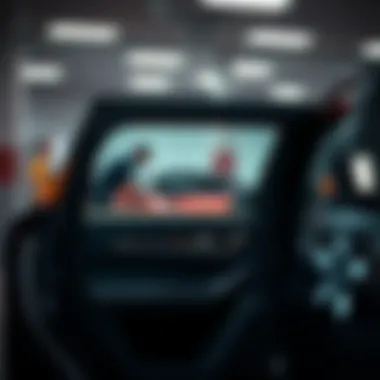
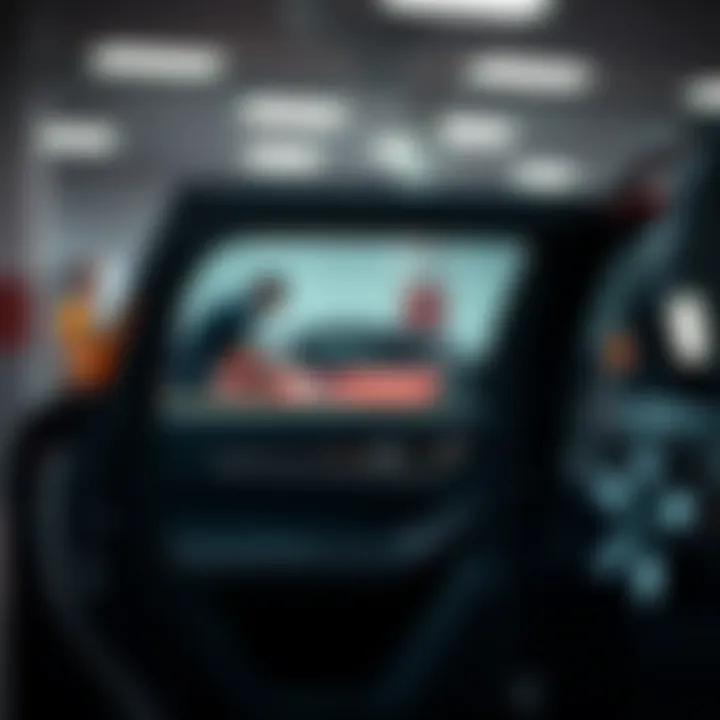
The unique feature of tempered glass is that, upon breakage, it shatters into small, blunt pieces, reducing the risk of injury. However, keep in mind that while it offers enhanced safety, it can be more expensive than other options.
Sealant
Sealant plays an essential role in ensuring that the new window is securely in place and helps prevent water leaks. A good sealant must be weather-resistant, providing longevity and stability. The key characteristic of a quality sealant is its adhesive strength, ensuring that the window fits snugly without gaps.
A unique feature of some modern sealants is their fast-curing properties which reduce the overall installation time. However, users must adhere strictly to application instructions, as improper use can result in ineffective seals.
Adhesive Strips
Adhesive strips are often utilized in the mounting process of the new window. Their role is to provide added support and security for the glass. The key characteristic of adhesive strips is their high-tack adhesive, designed specifically to bond efficiently with both glass and the vehicle's frame.
One unique feature is their ability to remain flexible after curing, allowing for minor adjustments during the installation process without compromising the bond. The drawback is that not all adhesive strips are created alike, and some may not withstand extreme temperatures or moisture conditions, so it’s crucial to choose high-quality options.
Proper tools and materials can drastically simplify the back car door window replacement process, improving both the results and experience.
Detailed Step-by-Step Replacement Process
Replacing a back car door window is a meticulous task that requires clear understanding and proper execution. This process is critical as it ensures not just the functionality of the vehicle but also safeguards the passengers. Knowing the steps aids in preventing damage to the vehicle's interior and ensures proper sealing against water and outside elements, which can lead to mold or rust. Thus, a comprehensive grasp of the replacement process is not only beneficial but necessary for maintaining vehicle integrity in the long run.
Preparation and Safety Measures
Ensuring A Safe Workspace
Creating a safe workspace is crucial before diving into the replacement task. It minimizes the risk of accidents and protects both the vehicle and the technician. A tidy environment helps in efficiently locating tools and materials, which means less time digging through clutter.
A well-lit area is a key characteristic of an effective workspace. This facilitates better visibility, preventing mishaps that can arise from poor lighting, such as cutting oneself on sharp glass. It’s also wise to ensure there are no loose items on the ground, which could cause falls or injuries during the process. In essence, a clean, well-organized workspace translates into smoother operation and greater satisfaction with the final results.
Using Protective Gear
Utilizing protective gear such as gloves and safety glasses significantly contributes to your safety during the window replacement. These items act as barriers, safeguarding your hands from cuts and your eyes from shards of glass. This choice is wise and prudent, particularly when there's broken glass involved, which can lead to minor or serious injuries if not handled carefully.
The unique feature of protective gear is that it ensures you can perform tasks with confidence. It allows you to focus on the replacement without the nagging worry of injury. The benefits here are clear: investing in basic protective equipment can save you from considerable trouble. Always remember, safety first!
Removing the Damaged Window
Accessing the Door Panel
Accessing the door panel is the first key step in removing the damaged window. This process entails detaching the panel from the door frame, a task that often requires examining the hardware securing it. Knowing how to loosen and remove these components properly can save a lot of hassle, preventing potential damage to delicate parts within the door itself.
A significant part of this step is understanding which fasteners to remove. Depending on the car model, fasteners may vary, and a wrong turn can lead to further complications. Thus, possessing a basic knowledge of your vehicle model’s hardware will streamline this operation and contribute to a successful replacement.
Removing Broken Glass
Once you have access to the interior of the door, the next step is to remove the broken glass. This part demands caution, as jagged edges can easily cause injuries. It’s important to handle the glass carefully and, where possible, use suction cups or gloves to grip the pieces safely. The previous organizational steps play a role here too; having a rubbish bag handy for disposing of glass shards will save you from a messy scene.
The notable advantage of effectively removing broken glass is the prevention of additional damage within the door structure. Sometimes, fragments can fall into hidden areas, potentially affecting the window mechanism. Maintaining a clean workspace and meticulously collecting pieces helps avert this issue, ensuring that you are ready for the next step without unnecessary setbacks.
Installing the New Window
Preparing the Frame
Before installing the new window, proper preparation of the frame is essential. This involves cleaning the area where the glass will sit, removing any old sealant and ensuring there are no obstacles. An uncluttered and clean frame allows for a better seal, thus enhancing the longevity of the new window.
Among the key characteristics of frame preparation is the careful inspection for any damage that may have occurred during the previous removal. If the frame shows signs of wear or cracks, addressing these issues beforehand can significantly improve the final outcome. A well-prepared frame serves as the best foundation for a successful installation.
Securing the Replacement Window
Once everything is set, it’s time to secure the replacement window. This final step is critical as it ensures that the window is tightly fixed in place, preventing it from rattling during drives and guarding against moisture seepage.
The operation's key point is to utilize appropriate adhesives or sealants that match your specific window type. A properly secured window offers the benefit of enhanced insulation and reduces noise from the outside environment. If securing is done well, it can save you from future trips back to the workshop or serious issues that arise from water damage.
Overall, each of these steps in the replacement process emphasizes the importance of attention to detail and safety. Engaging with these elements effectively not only guarantees that the job gets done but also ensures that it lasts, benefiting both the car owner and the vehicle.
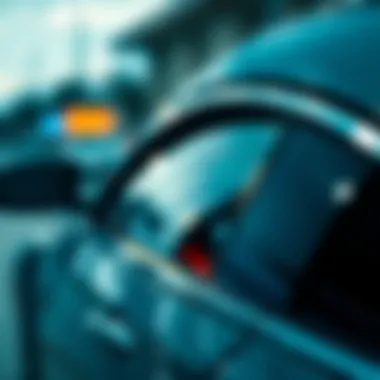

Common Issues During Replacement
When taking on the task of back car door window replacement, awareness of potential pitfalls can make all the difference. Addressing common issues during this process not only saves time but also ensures that the resulting installation is secure and reliable. From alignment problems to electrical issues, understanding these factors can lead to a smoother workflow and better outcomes in the long run.
Misalignment Problems
Misalignment of the window can lead to a myriad of issues, ranging from difficulties in operation to water leaks. One key consideration is that a misaligned window may not sit flush against the window frame, compromising both aesthetics and functionality. This misalignment can stem from improper installation techniques or even from tolerances in the vehicle’s door structure.
To avoid this problem, it’s critical to take precise measurements before securing the new window. Tools such as a level and tape measure can aid in checking the alignment during the installation phase. If misalignment occurs, adjustments must be made before fully sealing it in place, as correcting this later on can be a substantial hassle and might require redoing parts of the installation.
Leaking Seals
Effective sealing is fundamental to the longevity of any car window, especially in terms of preventing leaks. A poor seal can lead to unwanted water entry, which might cause mold and rust over time, damaging interior components. After installation, it’s important to thoroughly examine the area around the newly fitted glass for any gaps in the sealant.
Using high-quality adhesive and carefully following the manufacturer’s instructions can help achieve a good seal. In situations where a seal might be compromised, reapplication of sealant or adjusting the window’s fit can be necessary to prevent leaks from becoming a recurring problem.
"Preventative measures during installation save the time and trouble of leaks later on."
Electrical Issues with Automatic Windows
For those dealing with automatic back windows, electrical issues can crop up during the replacement process. If the window fails to operate correctly after installation, this can often be traced back to wiring problems or loose connections that were inadvertently disturbed during the window replacement.
Testing the electrical components before securing everything can help pinpoint any potential malfunctions. If abnormalities are detected, inspecting wires and connections can ensure everything’s in order. Furthermore, understanding the vehicle’s wiring diagram can significantly help in troubleshooting these kinds of issues.
By addressing these common challenges during the installation process, enthusiasts and professionals alike can ensure a successful and durable back car door window replacement. Foreknowledge of misalignment, sealing concerns, and electrical functionality lays the groundwork for a reliable repair.
Post-Replacement Maintenance
After going through the hassle of replacing a back car door window, it’s critical to give the newly installed glass proper attention. Post-replacement maintenance is not just about the new glass fitting well; it’s also about ensuring it functions optimally over time. A few key elements can help maintain its integrity and appearance, ultimately enhancing the car's longevity and safety.
Initial Care Guidelines
Avoiding Harsh Cleaning Products
Using appropriate cleaning materials is vital for the upkeep of the new window. Harsh chemicals can damage the window’s surface, degrade the seals, and lead to unnecessary cost later down the line. It's better to stick to mild soap and water or designated auto glass cleaners. The key characteristic of this approach is its gentleness, making it a popular choice for maintaining the clarity and strength of the glass. Cleaners with abrasive ingredients can create scratches or weaken the bonding agents around the window. Keeping clear of such products ensures that the window remains in peak condition, looking fresh and new for as long as possible.
Regular Inspections
Integrating regular checks into your routine can’t be emphasized enough. Observing the replacement window for any signs of stress or wear helps in taking action before problems escalate. This practice solidifies its role as a preventative measure, encouraging early detection of potential issues, such as leaks or separation from the frame. The key feature of regular inspections is their proactive nature which can save on costly repairs later on. The unique advantage is that it allows owners to maintain their vehicle’s aesthetics while reducing the chance of major failures due to neglect.
Ensuring Long-Term Durability
Long-term durability is essential for any car component, and the back door window is no different. This involves understanding wear patterns and responding to early signs of any issues. A proactive mindset can extend the life of the window and maintain the vehicle's resale value.
Addressing Wear and Tear
Recognizing wear and tear early offers a pathway to better maintenance. Regularly attending to small scratches, dust build-up, or seal deterioration can prevent bigger headaches later. The key characteristic here is the immediacy of addressing issues, preventing them from becoming larger problems. Investing time in small fixes is a beneficial choice since it can stave off the need for further repairs or replacement in the future.
Promptly Handling Issues
When a new problem crops up, dealing with it swiftly is of the essence. Ignoring minor chips or leaks can create significant complications, inviting moisture or dust that could impair visibility or function. The unique characteristic of this practice is its efficiency; quickly tackling problems keeps the vehicle aftercare simple and effective. The advantages of this approach are pretty clear— minimizing disruptions and allowing for continued use of the vehicle without significant downtime or repair costs.
"An ounce of prevention is worth a pound of cure."
In the end, keeping an eye on your replacement window isn't just smart; it's essential. Proper post-replacement maintenance habits not only preserve your investment but also ensure your safety and comfort on the road. A well-maintained window enhances your driving experience and safeguards against future frustrations.
End
The significance of delving into back car door window replacement cannot be overstated. Gaining a solid grasp of the entire process—from the identification of issues to actual replacement—arms both enthusiasts and professionals with the knowledge necessary for proficient execution. It’s not simply about swapping broken glass; it’s about understanding the interplay of components involved in your vehicle's windows, which impacts safety, functionality, and style.
Summary of Key Takeaways
A comprehensive understanding of back door window replacement encompasses several critical elements:
- Identifying Problems: Recognizing issues promptly can prevent more extensive damage and costly repairs. This includes understanding when cracks, chips, or electrical malfunctions signal the need for replacement.
- Types of Windows: Familiarity with different varieties of back car door windows—manual, automatic, tinted, tempered—allows for informed decisions during the replacement process.
- Required Tools and Materials: Having the right tools and materials ensures a smoother replacement. This includes everything from screwdrivers to specialized adhesives—each plays a vital role.
- Step-by-Step Process: Knowing the correct procedures to replace the window, from safely removing the old window to securing the new unit, aids in lessening mistakes and enhance safety.
- Post-Replacement Care: Maintenance of newly installed windows extends their lifespan, thus encouraging regular checks and careful upkeep.
Encouragement for DIY Enthusiasts
For those drawn to the DIY approach, tackling back car door window replacement is both a rewarding and enlightening venture. It serves not just to improve your vehicle but also enriches your understanding of automotive mechanics. Attempting this task cultivates a deep appreciation for craftsmanship and fosters skills that can be applied to various car maintenance projects down the line. Just remember, patience and precision are your best friends—work methodically, and don’t rush through the steps.
Whether it's the thrill of rolling up your sleeves or the satisfaction of achieving a job well done, engaging in this kind of project empowers you to take charge of your vehicle's care. Equip yourself with the right knowledge and tools, never hesitate to reach out for help, and make your vehicle truly your own.







